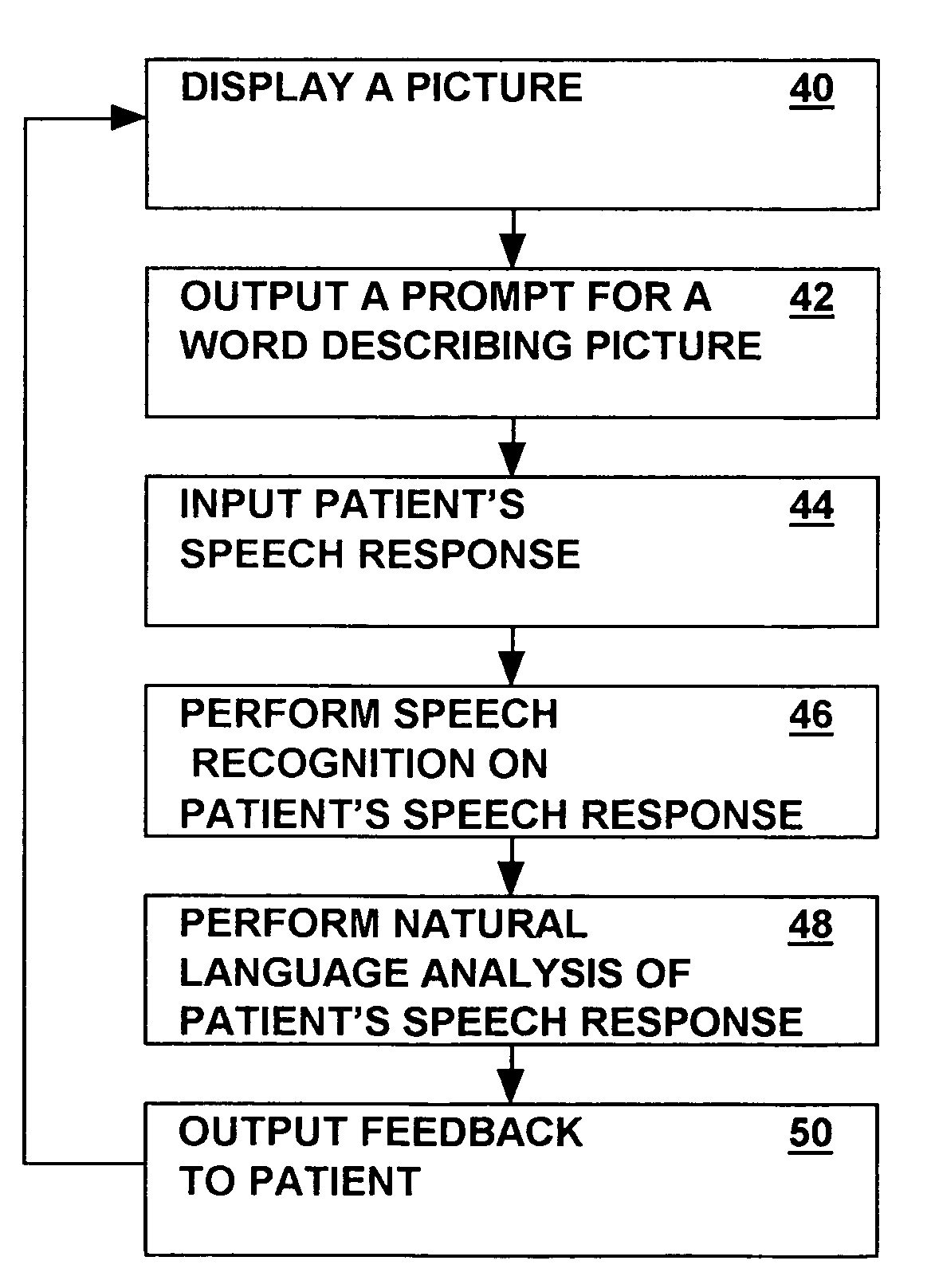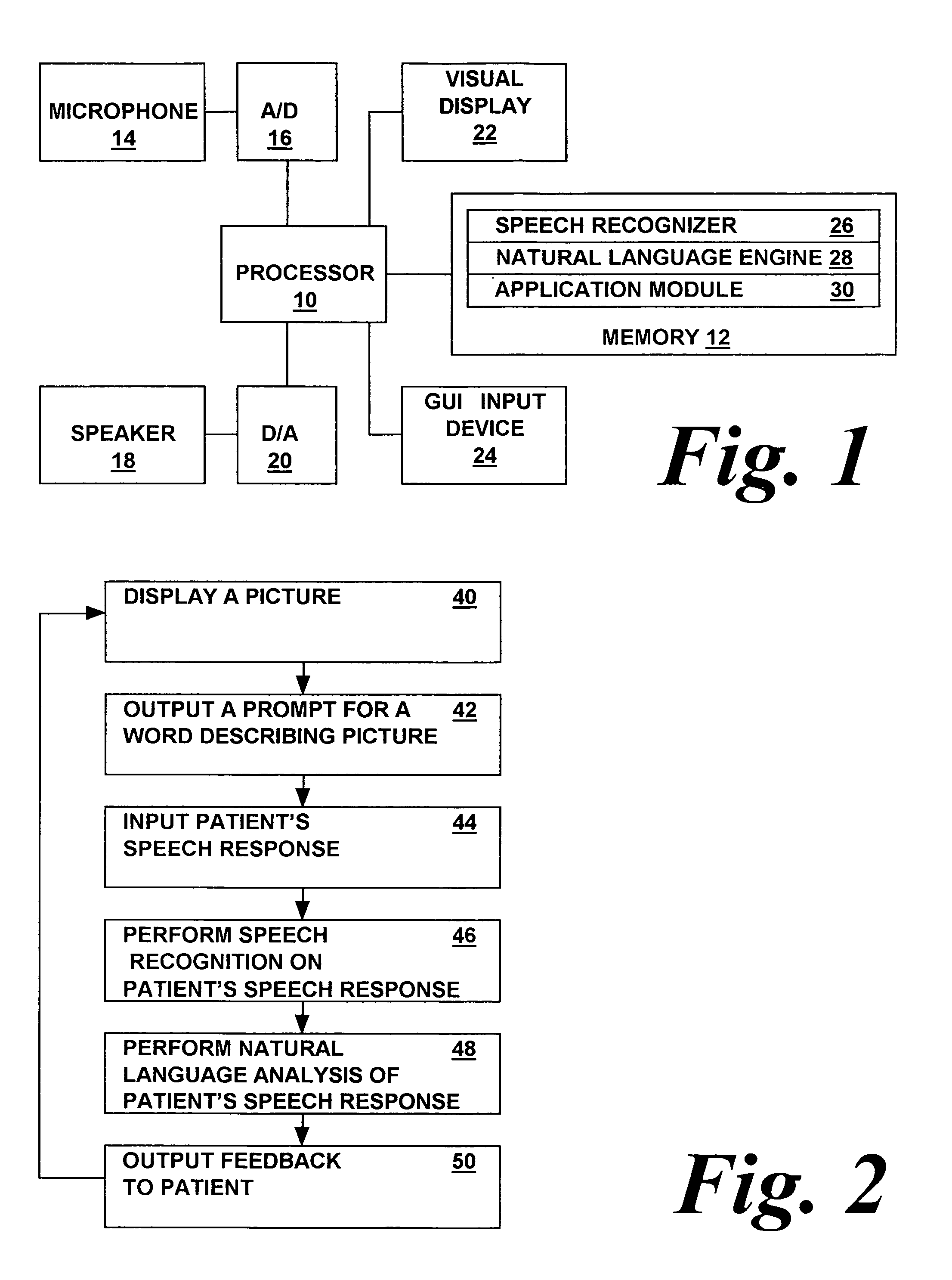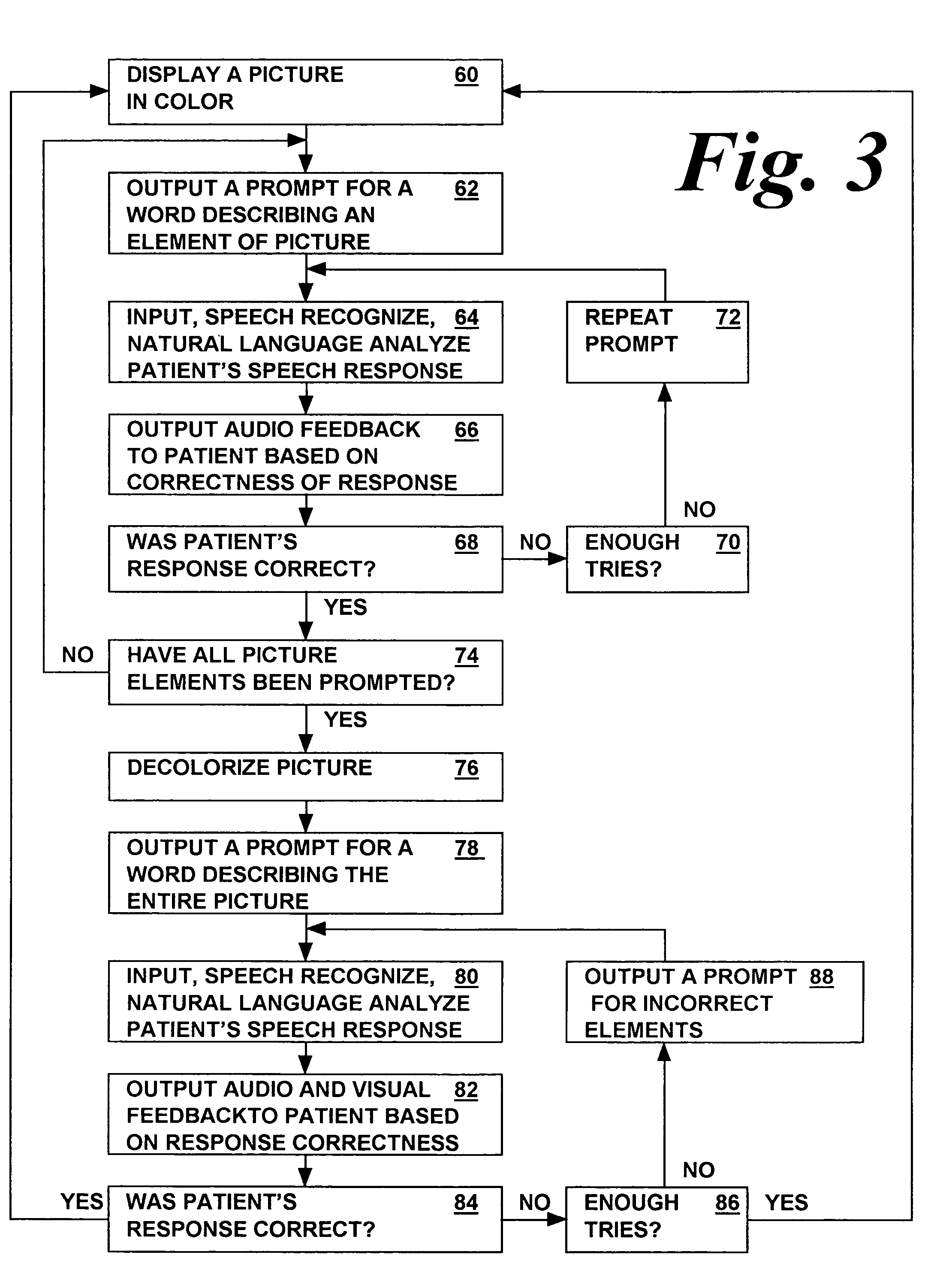Aphasia therapy system
a speech therapy and aphasia technology, applied in the field of speech therapy, can solve the problems of limited patient access to speech therapists, high cost of speech therapists, and interference with speech ability, and achieve the effect of improving speech
- Summary
- Abstract
- Description
- Claims
- Application Information
AI Technical Summary
Benefits of technology
Problems solved by technology
Method used
Image
Examples
Embodiment Construction
[0010]The present invention is preferably implemented as a multimedia computer system including audio input and output and a visual display, the computer system operating in accordance with stored instructions to effect the method of the present invention and provide a speech therapy system in accordance with the present invention. The preferred system incorporates speech recognition, a natural language understanding system, a touch screen, and pictures in a series of exercises designed to retrain specific grammatical structures. The system is preferably able to conduct exercises that progress from simple active sentences (“the fireman carries the ballerina”) to prepositional phrases (“the bird is behind the glass”), notoriously difficult for most aphasic patients, and to more complex structures incorporating prepositional phrases (“the man throws the book from the tower”). Patients view pictures and describe the events depicted in these pictures by speaking into microphone. Since a...
PUM
 Login to View More
Login to View More Abstract
Description
Claims
Application Information
 Login to View More
Login to View More - R&D
- Intellectual Property
- Life Sciences
- Materials
- Tech Scout
- Unparalleled Data Quality
- Higher Quality Content
- 60% Fewer Hallucinations
Browse by: Latest US Patents, China's latest patents, Technical Efficacy Thesaurus, Application Domain, Technology Topic, Popular Technical Reports.
© 2025 PatSnap. All rights reserved.Legal|Privacy policy|Modern Slavery Act Transparency Statement|Sitemap|About US| Contact US: help@patsnap.com



